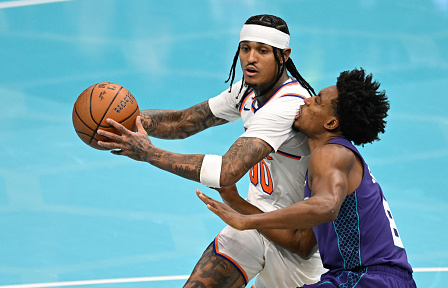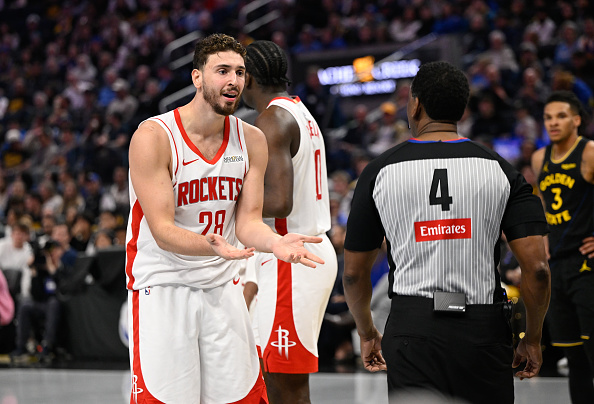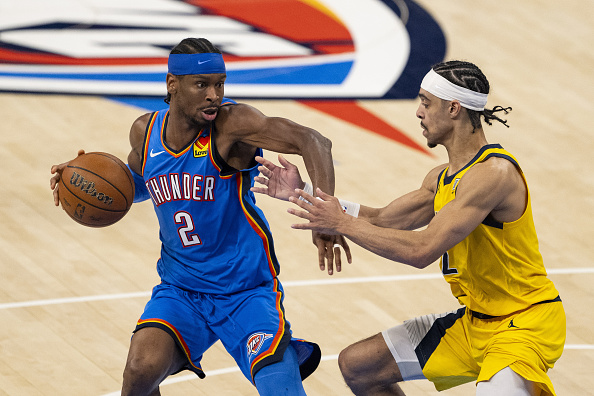On June 20th, 2019, 60 players were drafted in the NBA Draft. The Cavaliers selected three of them. After a putrid 2018-2019 season, ending in just 19 wins, the Cavaliers lost out in the draft lottery, falling from the second pick to the fifth pick. This led them to them missing out on eventual top four picks Zion Williamson, Ja Morant, RJ Barrett, and DeAndre Hunter which stings, but the Cavs do have other players to look forward to in the way of three first-round picks.
Round 1: Pick 5: Darius Garland, point guard, Vanderbilt
Garland has made a second notch to the reasons why the number five was important to him. At Vanderbilt, Garland played just five games as a meniscus injury halted #10’s otherworldly start to college basketball. As the fifth pick, the Cavs endured a heavy risk to select the point guard, but the former Commodore’s four-game stretch of college action brought quite the following. While averages of 16.2 points, 3.8 rebounds, and 2.6 assists per game do not jump off the page, eliminating the game in which he got injured (and only played two minutes) drags his averages up to 19.8 points, 4.8 rebounds, and 3.3 assists on 53%/48%/75%. Oddly enough, Garland’s numbers are eerily similar to another former SEC point guard, Collin Sexton. Sexton has the peculiar distinction of being Garland’s new teammate in northeast Ohio.
While four real games of college action are nowhere near a relevant sample size, Garland displayed talent in scoring the basketball. Garland had games of 24, 19, and 33 in the stretch, although his other game saw him finish with just three points after making one of six shots. Regardless of his unsatisfactory performance against Alcorn State, Garland was electric with his shot against Winthrop, USC, and eventual tournament team: Liberty. Garland nailed a total of 11 threes in those three games, hitting them at a robust .550% and draining five over the Liberty Flames. The small sample size is cause for concern, but Garland will have plentiful time to grow with the Cavs and new head coach John Beilein.
Round 1: Pick 26: Dylan Windler, small forward, Belmont
Whereas his draftmates played a total of 26 college games, Windler played in 30-plus games in all four of his seasons as a Belmont Bruin. Windler underwent stereotypical growth between his freshman and senior seasons, more than doubling his per-40 scoring rate and becoming an otherworldly three-point marksman. Windler hurled a mammoth 7.1 threes per game in his senior season, hitting a total of 100 at a .429% clip. Despite taking more threes than twos as a senior, Windler connected on 54% of his shots, including 66% of his twos.
Windler projects as a plus-level NBA shooter in large part to his near-85% effectiveness from the free throw line, although he only posted a number that high in his final season. Windler’s season, slightly overshadowed by a certain Ja Morant who won the Ohio Valley Conference Player of the Year over Windler, finished with a line of 21.3 points, 10.8 rebounds, and 2.5 assists per game.
Looking back at Windler’s season, the highs and lows of the Bruin came in March. In four postseason games, two OVC tourney games and two NCAA tourney games, Windler had a pair of 30-point eruptions accompanied by 17 against Murray State in the OVC Final and a shambolic 5 points against Temple in the First Four of March Madness. In a similar vein, the March version of Windler hit over 50% on double-digit threes twice while going 2-12 in the Murray State and Temple games.
At the highest level, Windler was inconsistent as a scorer, but he did pull down at least 11 rebounds in all four games, including 21 against Austin Peay in the OVC Semifinal. However, the coming out party of Windler came in the round-of-64 game against Maryland. Windler took 23 shots, scoring a total of 35 points as the Bruins fell in the dying seconds to the Terps. Windler missed a three-pointer to win the game with under two seconds left, but the remainder of the game was a masterclass from the senior with seven threes and 11 rebounds, showing immense versatility. It ultimately ended in defeat, but Windler responded on the biggest stage.
Round 1: Pick 30: Kevin Porter Jr., shooting guard, USC
The Cavaliers acquired the 30th pick through a draft-day trade with the Milwaukee Bucks.
A top 30 recruit in the 2018 class, Porter Jr. offered a mixed bag during his 21 games in Los Angeles. On one hand, Porter brought forth defensive effort, tallying 2.4 steals and blocks per 40 minutes while hitting 41% of threes. On the other hand, Porter only started four games for the Trojans and made a shocking 52.2% of his free throws. A raw prospect, Porter contributes a significant upside to the wing position in Cleveland, but he needs to refine his free throw stroke without losing his three-point touch. Porter had his fair share of struggles at USC, such as missing time due to suspension, but he was a tremendous value at 30 based on his five-star recruitment out of high school and lottery buzz at points of the season.
Moving on to the traditional four-game sample size, this article will look at the four starts that Porter made while at USC. Porter nabbed 10 points in each start, but a start-high of 15 and a season-high of 17 points paint a story of missed collegiate potential. The mixed bag of Porter’s season is exemplified in his starts as he was a pest defensively, recording six steals and two blocks. Offensively, Porter was drained by a case of missing shots as he hit 45.7% of field goals, 27.3% of threes and 50% of free throws.
His four games as a starter do not include his decent contribution of triples, which is unfortunate. Of the nine games that saw Porter shoot four or more threes, he shot 50% in five of them, but only one of those five was a start. Porter had three separate 3-for-4 from three shooting nights, but it was hardly a consistent threat as Porter made multiple threes in back-to-back games just twice all season. The most telling analysis of Porter is when he is on, it is something nice to watch, but if he is slightly off, it is similar to watching your house evaporate. Porter has high-end potential, but he must escape the grasp of the metaphorical trash can.
As of now, the Cavaliers earn an A for the 2019 draft as they were able to maximize value and fill desperate needs (shooting). Coach Beilein should now be able to work some magic for Cleveland as Year two without LeBron James begins soon.






